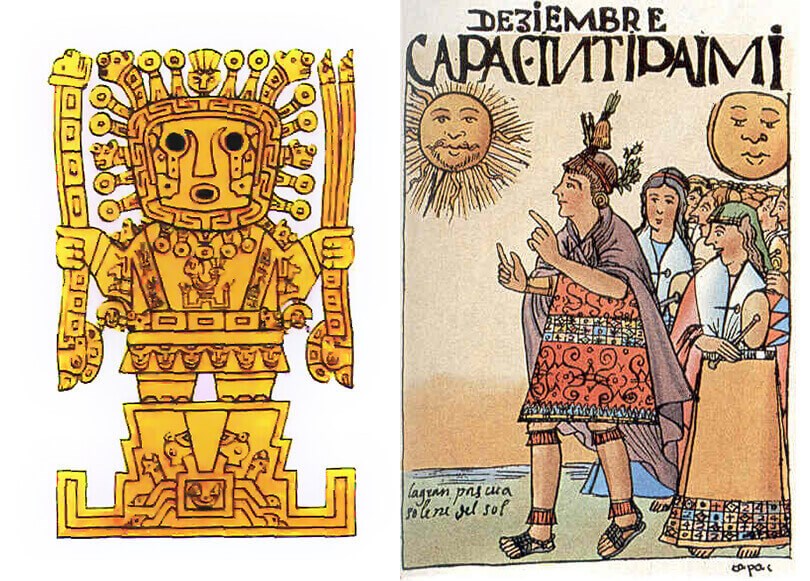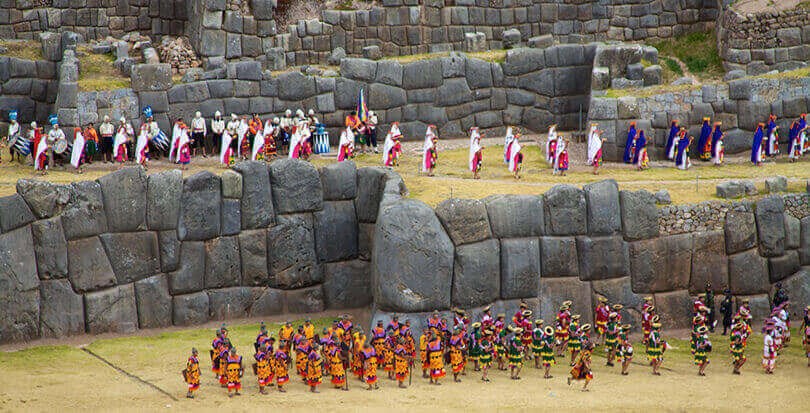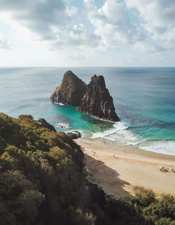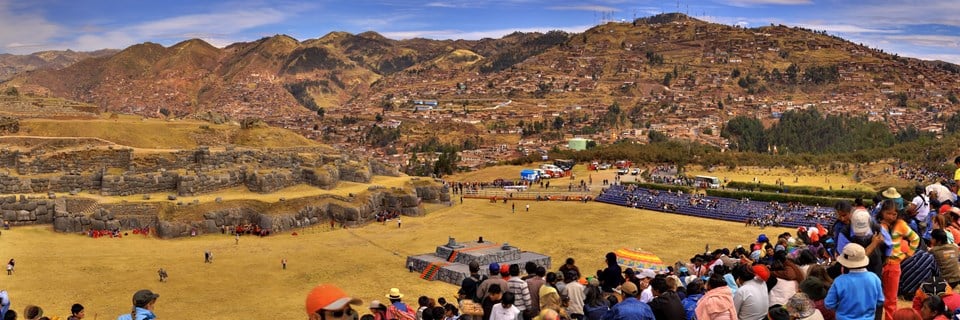Discover the story behind the Inti Raymi festival, when it is and how you can attend this ancient Inca celebration in Cusco.
Inti Raymi was a nine day celebration of the sun god during Inca times, marking the winter solstice in Peru and the start of the new calendar year. Banned by the Spanish in the 16th century, it was consigned to history for nearly 400 years until the first re-enactment of the festivities took place. Today it is one of South America's most important festivals and offers a window into the Inca culture that is worth exploring in more detail and experiencing in person.
The Cult of the Sun
Along with the supreme creator god Viracocha, Inti was the most revered and celebrated god in the Inca pantheon of deities, the worshipping of whom grew to become a state cult in the 15th and 16th century, at the zenith of the empire's power. Said to have created the first Incas, Manco Capac and Mama Occlo, Inti was considered a giver of life, but also prone to bouts of anger in the form of solar eclipses should he become displeased. Therefore lavish temples were constructed at great expense and physical undertaking in the name of the sun god, among the most significant of which were those of Qoricancha and Sacsayhuaman in Cusco.
The emperor Pachacuti was keen to establish the worship of Inti as a state religion, venerating the sun god, ordering the building of said temples, making ceremonial sacrifices to him and promoting the narrative of his own position as the embodiment of Inti on earth. In this way he was able to anchor the expanding empire behind a central figure.
And what better way to consolidate this than with an elaborate multi-day festival in the Inca capital of Cusco in which he himself played a starring role, speaking directly with Inti before the eyes of his loyal subjects.
 Viraocha & the worshipping of Inti
Viraocha & the worshipping of Inti
Celebrating the Solstice
The celebrations marked the winter solstice of 21st June, the start of the Inca calendar. However, the actual day in which Inti Raymi took place was 24th June, as the Incas believed that the sun stayed in the same place for three days, before moving closer again. Given its importance in Inca mythology, they were so fearful of the sun continuing to move further away from the earth, and even vanishing completely, that they put on such an extravagant 'Festival of the Sun' to appease Inti and tempt him back from the edge of darkness.
The significance of the winter solstice is best evidenced in the design of some of the empire's most famous structures, most notably the Intipunku (Sun Gate) at Machu Picchu, through which the rays of the sun pass perfectly on this auspicious day and the observatory, which also aligns perfectly with the sun on 21st June. The festivities were also an opportunity to pray for a bountiful harvest over the coming year.
Prohibition & Resurrection
The Inti Raymi festival flourished during the height of the Inca reign, but was brought to a shuddering halt by Viceroy Toledo in 1572, some 40 years after the Spanish had arrived. Seen as a direct conflict with their Catholic beliefs, the authorities banned the festivities, having initially turned a blind eye or not noticed the pockets of celebrations which endured after the fall of the empire. The ruling came as a wide-ranging crackdown on Inca beliefs and ways of life following several bouts of uprising from sections of the defeated civilisation.
For centuries the festival was consigned to the history books, until in the 1940s writer and actor Faustino Espinoza Navarro and historian Humberto Vidal Unda dusted off the chronicles of Inca Garcilaso de la Vega and pieced together the action. Having painstakingly studied the reports of the ancient ceremony, a new script was written detailing the proceedings and the Inti Raymi was reborn. In 1977 it was again formalised as a public holiday in the Cusco area.
 Celebrations at Sacsayhuaman (photo by Mckay Savage)
Celebrations at Sacsayhuaman (photo by Mckay Savage)
Attending the 2023 Inti Raymi
Of course one of the main reasons to travel to Cusco and the Sacred Valley is to visit the spectacular ruins left behind by the Inca empire, marvelling at their ingenuity and piecing together aspects of their culture and civilisation through these remains. Attending the Inti Raymi is a wonderful extension to this experience, vividly bringing to life this ancient civilisation in a colourful celebration of Inca culture.
Following days of street parades and parties, proceedings begin outside of Qoricancha, in Inca times the site of the most sacred Temple of Sun in the entire empire, and a mass takes place in the city's cathedral on Plaza de Armas. The Inca emperor then pays thanks to Inti, before he is carried three miles on his throne up to Sacsayhuaman, for the main part of the celebrations. Here, participants in brightly-coloured traditional Inca dress, usually from Cusco and the surrounding area, perform rituals, dances and sacrifices in the name of the sun god. Afterwards traditional music and dancing follows.
The 2023 Inti Raymi takes place on Friday 24th June in Cusco. The Inti Raymi can be incorporated into a more extensive tour of Peru's Inca heritage, including visits to the Sacred Valley, Machu Picchu and Lake Tititcaca. Bear in mind that you might expect to pay higher hotel prices in Cusco and the city will of course be much busier during this time.

Stay in touch
Infuse your travels, with inspiration from our monthly newsletter.
READY - 12 April 2024
INDIA: Fascinating Culture & Kembh Mela Festival
LANDMARK TOURS: Multi-Country & Cross Continent. New Cosmopolitan Tour: Buenos Aires, Iguazu, Rio
CHINA & INDIA: Local Life, People & Unique Cultures
GUIDES by Veloso Tours, are the best Local Hosts
PRIVATE VILLAS: Quality Time in exclusive settings
TRAVEL INSURANCE with extensive COVID-19 cover
